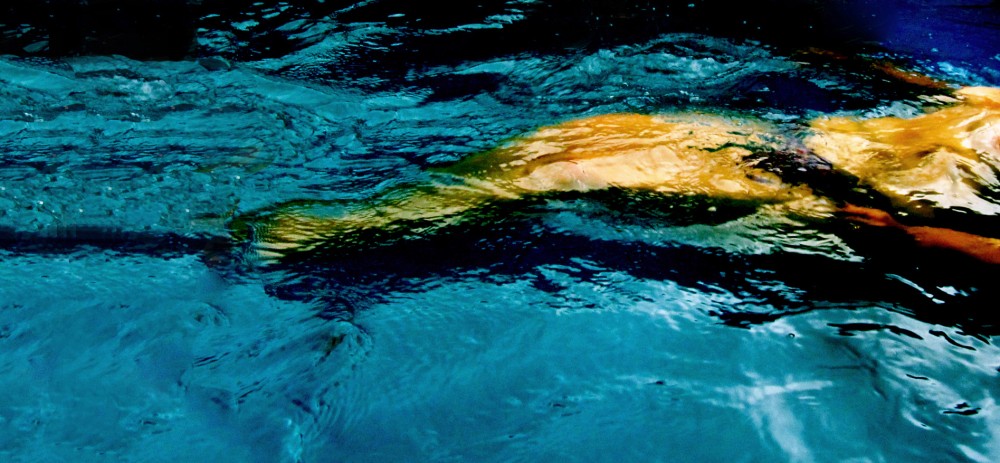At midnight last night I was in bed, thinking about the forty-minutes talk on art that I was due to give the next afternoon (today), when I started to worry that I might run out of things to say about “Painting in the open air” (which had been my original thought because I had a funny story based on an unfinished painting of the Australian bush that had been painted “en plein air”).
“Chris?” I asked in the darkness, hoping that Chris was not asleep yet.
“Yes?” Chris was awake now… if he wasn’t before.
“Can you think of any funny stories surrounding any of my paintings that I could talk about tomorrow?”
There was a long silence and I thought Chris had gone back to sleep, but no, he was pondering on what I had asked.
“What about the painting of Adam Trumbet’s wife? That’s a funny tale. And you still have the painting to show,” suggested Chris.
“Ah, yes, my ‘Dorian Gray’ painting! Clever you.”
“Or Doreen,” he corrected.
We laughed as we do whenever on the subject of that particular painting, always with rather a lot of irony, although it has to be said that the memory of it has got funnier, and less worrying, with the passage of time – it is seventeen years since I painted it. I went to sleep thinking about how I would present my talk.
At a quarter past two this afternoon I turned up at the Hedley Way Centre in the Dawlish Manor grounds; Chris and my dear old Mum accompanied me – they were my Sherpas (and I thought Mum might enjoy the outing). Chris carried my heavy easel, while my mother and I carried the paintings. Everyone was rather intrigued by the largest painting, which I kept covered on the easel during most of the talk. I began by saying that I had decided to be a bit different to other artist guest speakers by telling them, not about my best painting experience, but my worst! I called my talk, “The Perils of Portrait Painting”.
To give you the “Doreen Gray” story in a nutshell, a recently bereaved husband commissioned me to paint his much missed wife of thirty years, but I had never met his wife and all the photos, showing his wife through the decades, were unclear and either too distant or too blurry to be sure of ascertaining a correct likeness. He did not favour one photograph above another and left the choice up to me; likewise, he had no preference for backgrounds. I was to telephone him when I had something to show him. I painted ‘Doreen” by the sea – she was a pretty twenty-something wearing a mini-skirt. Adam came to view the oil painting at my gallery.
“It’s just like her,” he began, “except for her mouth. Can you please change her mouth? And there’s something about her chin, her chin was a bit heavier.”
Adam didn’t realise that if you change a mouth, and a chin, you may as well change everything and start again, which is exactly what I did. Thus began the gradual transmogrification of Doreen’s image, in five different settings (beach, moors, gardens, Pre-Raphaelite fantasia, plain blue, plain dark green), in five different layers of oil on the same canvas.The painting became my block, preventing me from moving on to other work, and looming over me for the two years it took to arrive at the final stage.
Adam hadn’t called during that period. I saw him around the town, walking arm-in-arm with a new lady; at last I summoned the courage… and got Chris to call him.
“I can’t face it,” he said, “it’s giving me a nervous breakdown. I’ll get get my former sister-in-law to come and look at it.”
Adam never came to see the painting of his first wife – his second wife probably didn’t want a large oil portrait of the first Mrs Trumbet above the fireplace – and “Doreen” has lived with Chris and me ever since. I pass her on the stairs every day but I rarely look at her.
Towards the end of my talk at the Hedley Way Centre this afternoon, after tantalising the audience on several occasions by making to pull back the cloth, and failing to do so; at last, following much urging, I revealed the painting. The lovely Dawlish folk cheered and were unanimous in their appreciation of Doreen’s soft face and the hint of a smile on those lips that had been painted and re-painted to perfection.
“Her eyes follow you everywhere,” said one nice man.
“She’s good-looking – isn’t she?” said a lady.
“A nice face,” agreed another.
The same nice man, who had liked Doreen’s eyes, stood up with his hands together when I had reached the end of my forty minutes or so, and thanked me. The meeting had started with the Lord’s Prayer and ended with a song of grace for the tea and biscuits we were about to partake of. I thought how sweet and charming they were – the old-fashioned quaintness was somehow refreshing.
It is only now, as I write this, that I am beginning to look at the original Mrs Trumbet (in her many layers) in a good light. Perhaps from now on I shall look up at her as I pass by on the stairs and think, “You have a nice face…”




